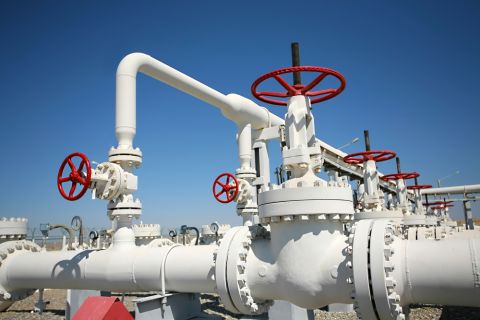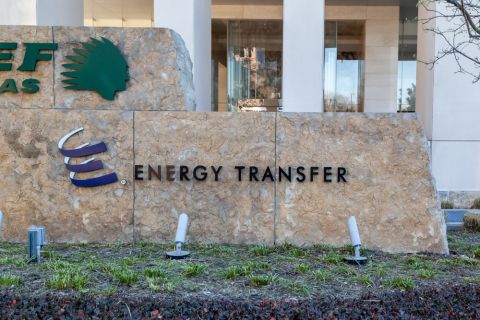By Nancy Schmitt, President and Partner, Taum Sauk Capital Management The promise of shale will remain in the ground. What? Sound impossible? It’s more likely than ever. This is how it is happening. Referring to themselves as “just a bunch of hippies up in Ithaca,” the protestors who have filled the Department of Environmental Conservation (DEC) public hearings and monopolized the public debate on the moratorium on hydraulic fracturing in New York state are dismissed by industry and others as just a few extreme environmentalists. Yet, given enough time and financing, the protestors are going to grassroots organize anyone who ever backpacked in the Catskills or bought food from an organic grocery store. Their objective is not the tightening of regulations on shale development so that the moratorium in New York state can be lifted, which is what the hearings are about. Rather, their objective is to ban shale development altogether. As the protest grows, the message is spread using the internet and community groups. The protest, that began with environmentalists and students, now includes doctors, lawyers, financiers, and even priests. “Would Jesus Frack?” was the cover article of the most recent issue of The Episcopal New Yorker. Pillars of the community are terrified of potential toxins in their food and fracing underneath their homes. One by one, they throw in with the protestors. State and local politicians react to the concerns of their constituents. Assemblyman Robert Sweeney from Long Island and 34 others sponsored a bill to ban all hydraulic fracturing in the state of New York. Sen. David Carlucci from Rockland County (across the Hudson River, west of New York City) and 22 others introduced the same bill in the Senate. Both bills were initiated at the end of the last session. Some think that the bills will pass if called for a vote. Although that won’t happen until the outcome of the DEC hearings is known, when the legislature resumes in January, it is possible. Industry and trade associations respond with aggressive lobbying. Thinking that facts and scientific studies will quell the protest, they fail to discern the real issue: fear. The exaggerated fear has been created by publicizing a handful of incidents of possible air and water pollution, which the industry and regulators generally deny. Protestors accuse, industry ducks, regulators appease and the public has to choose which side to believe. The public believes the neighbors, who are the protestors, because that’s who they know. Heightened fear at the local level drives municipal bans on high volume hydraulic fracturing. Local bans lead to the state banning fracing on state lands, in watersheds and other sensitive areas. Congress takes note and bans it on federal lands. As the protest continues to spread, it captures the attention of the national and international media. “Fracing cannot be regulated,” protestor celebrity Josh Fox shouts. “It must be banned!” Once the practice is banned in municipalities, watersheds, and government land, not to mention France, why should it be allowed elsewhere? Protestors equally distrust industry and government. Government regulation is viewed as ineffective against widespread, low-level pollution. Agreeing with the protestors without saying as much, the White House under President Barack Obama reiterates his view that the economy of the future must be green and sustainable. (Never mind expense or reliability.) Reportedly, Obama confidently told White House VIPs that, “Oil and gas will be important for the next few years. But we need to go on to green and alternative energy. [Energy] Secretary [Steven] Chu has assured me that within five years we can have a battery developed that will make a car with the equivalent of 130 miles per gallon.” The most recognizable spokesman for the natural gas industry, Boone Pickens, addresses the American people and assures them that America’s energy future has never been brighter. ‘Getting off foreign oil and onto domestic natural gas’ will revitalize the economy like nothing else. Everything he says, even if true, falls on deaf ears. He is chiefly viewed as a canny businessman who made billions of dollars from the oil and gas industry. As the protest takes root and flourishes in New York, it spreads to other states, the eastern provinces of Canada, Washington, D.C., European countries and the seat of European Union power in Brussels. This is how the tide of public opinion is turned. Shale development dies as it is being born. It doesn’t have to be this way, but it just might be if industry doesn’t get more engaged with what is happening in New York. People here are signing onto a protest after hearing just one side of the story. The industry responds with more lobbying and advertising, but this isn’t doing the job. These efforts demonstrate how much money the industry can afford to spend, but they don’t change minds or hearts. Industry also must get busy making high volume hydraulic fracturing zero-impact. Drilling wells should not pollute water. Producing wells should not pollute air. The industry was pollution free in the Gulf of Mexico and on the North Slope when I worked there 30 years ago. Why can’t it be done now? Why isn’t the industry meeting this challenge? The shale protest has to be quickly taken seriously, starting with what’s going on in New York. Otherwise … Rachel Carson meets Arab Spring and who knows where it goes. Editor’s Note: Taum Sauk Capital Management manages investment funds, which focus on energy and natural resources. It invests in all forms of energy. For more information on the shale protest as viewed by a former energy industry professional, see my blog.
Recommended Reading
Wayangankar: Golden Era for US Natural Gas Storage – Version 2.0
2024-04-19 - While the current resurgence in gas storage is reminiscent of the 2000s —an era that saw ~400 Bcf of storage capacity additions — the market drivers providing the tailwinds today are drastically different from that cycle.
Ozark Gas Transmission’s Pipeline Supply Access Project in Service
2024-04-18 - Black Bear Transmission’s subsidiary Ozark Gas Transmission placed its supply access project in service on April 8, providing increased gas supply reliability for Ozark shippers.
Kinder Morgan Sees Need for Another Permian NatGas Pipeline
2024-04-18 - Negative prices, tight capacity and upcoming demand are driving natural gas leaders at Kinder Morgan to think about more takeaway capacity.
Scathing Court Ruling Hits Energy Transfer’s Louisiana Legal Disputes
2024-04-17 - A recent Energy Transfer filing with FERC may signal a change in strategy, an analyst says.
Balticconnector Gas Pipeline Will be in Commercial Use Again April 22, Gasgrid Says
2024-04-17 - The Balticconnector subsea gas link between Estonia and Finland was damaged in October along with three telecoms cables.




